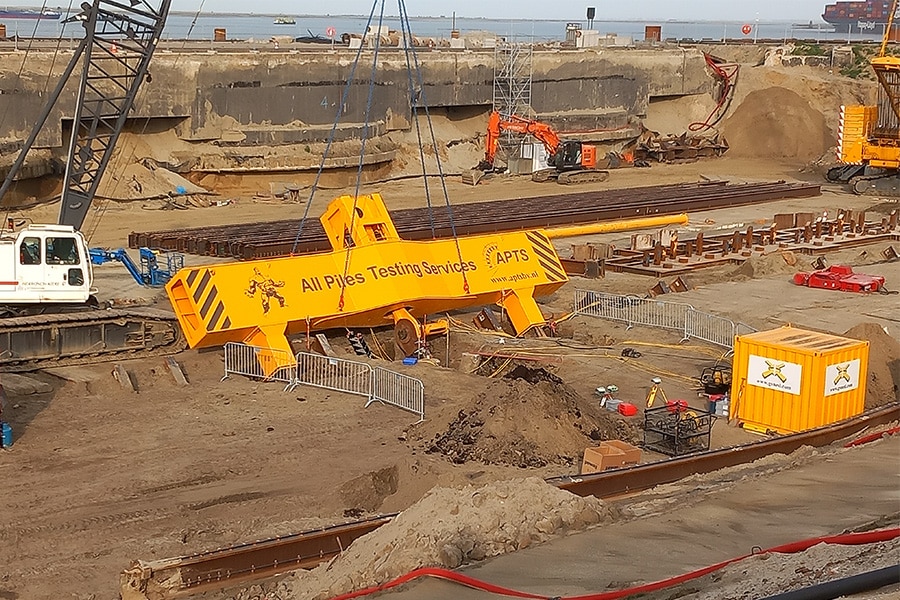
Pole tests prove that a standard is not necessarily beatific
Pile tip is overestimated, shaft friction underestimated
A pile system derives its load-bearing capacity from a combination of the point force and the shaft friction. Current Dutch standards and guidelines historically rely too much on the point force. Shaft friction, on the other hand, is often significantly undervalued and is also disadvantaged by the limitation of cone resistance. Unjustified, argues Dylan van Opdurp of engineering firm BMNED, and he is receiving increasing support for this from leading academics in the Netherlands. "Overestimating the point force can even lead to serious damage cases, as practice unfortunately makes painfully clear all too often."
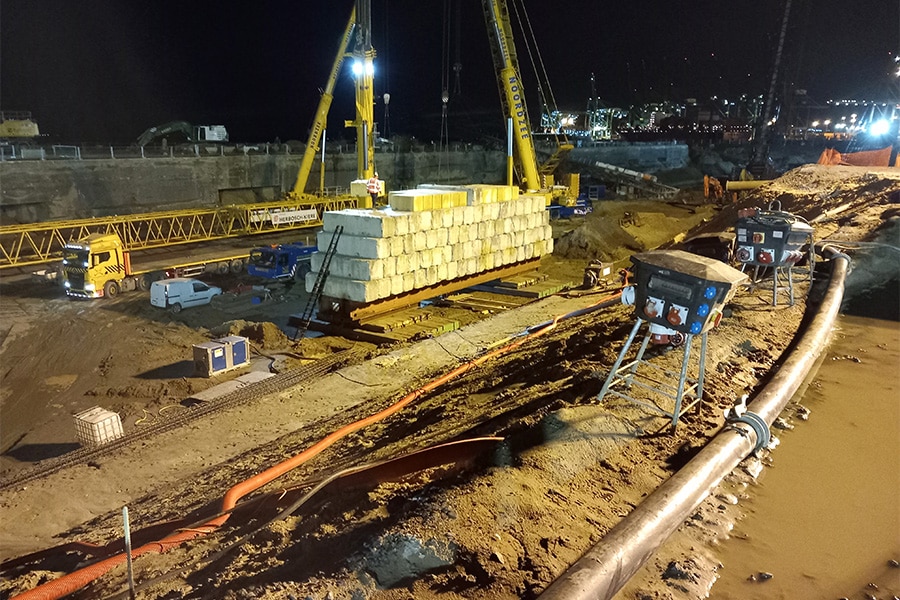
Standards and guidelines
In current calculation standards for determining the load-bearing capacity of a foundation pile, almost everything is attributed to the point, Dylan says. "The actual available point force is therefore considerably, in some cases heavily, overestimated. In a number of cases, this has unfortunately already led to serious damage cases where buildings have subsided and/or structures have been severely damaged. Fortunately, there is a growing realization that the pile tip does not bring that which might be expected there based on "old assumptions. The realization that something was or could be wrong with our generally accepted and standardized pile class factors already crept in at BMNED in early 2017. That was when a ministerial decree downgraded the pile class factor for the pile tip, actually one of the calculation parameters. However, an escape was built into this decision. Namely, if the foundation company could demonstrate by means of high-quality tests that the pile class factor for its pile point gave a better (higher) value, then it did not have to be downgraded or less."
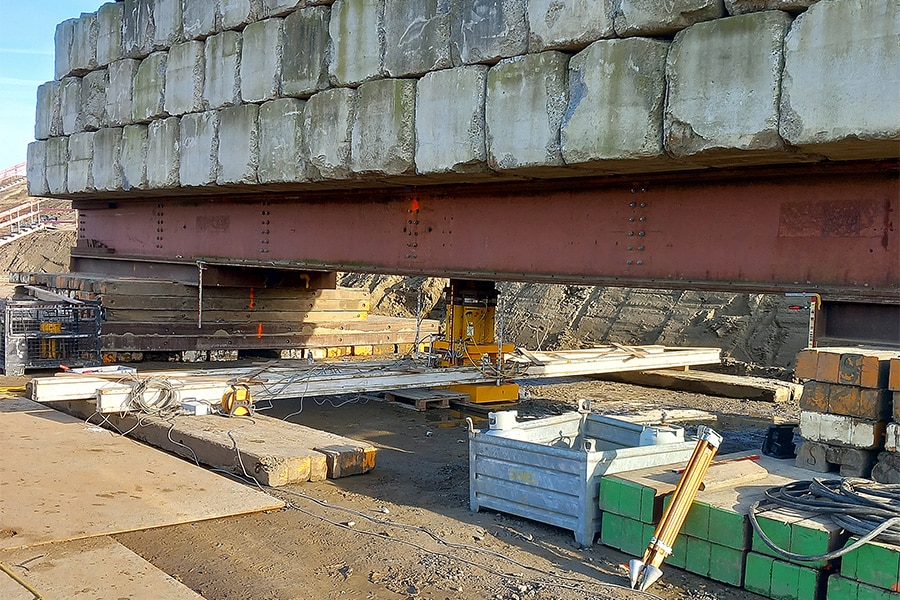
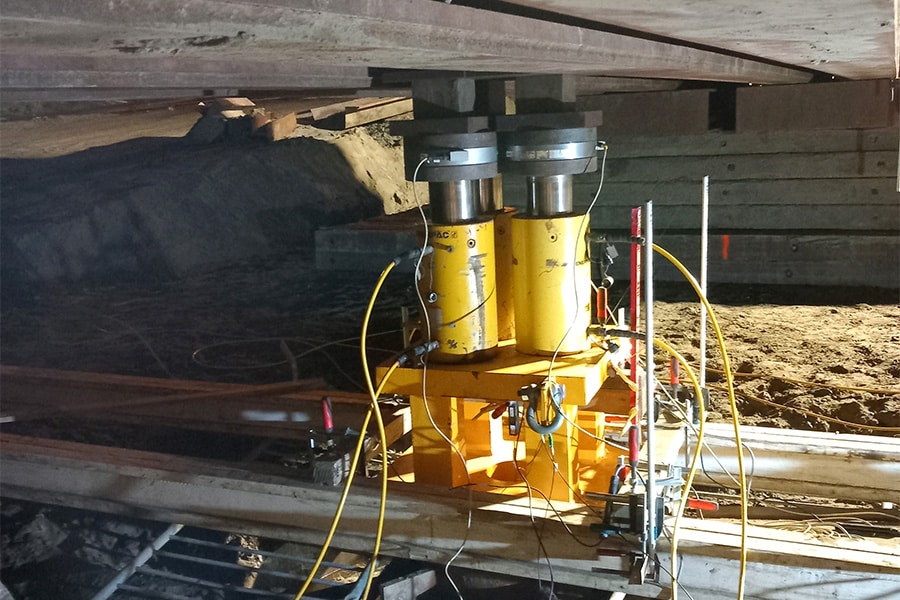
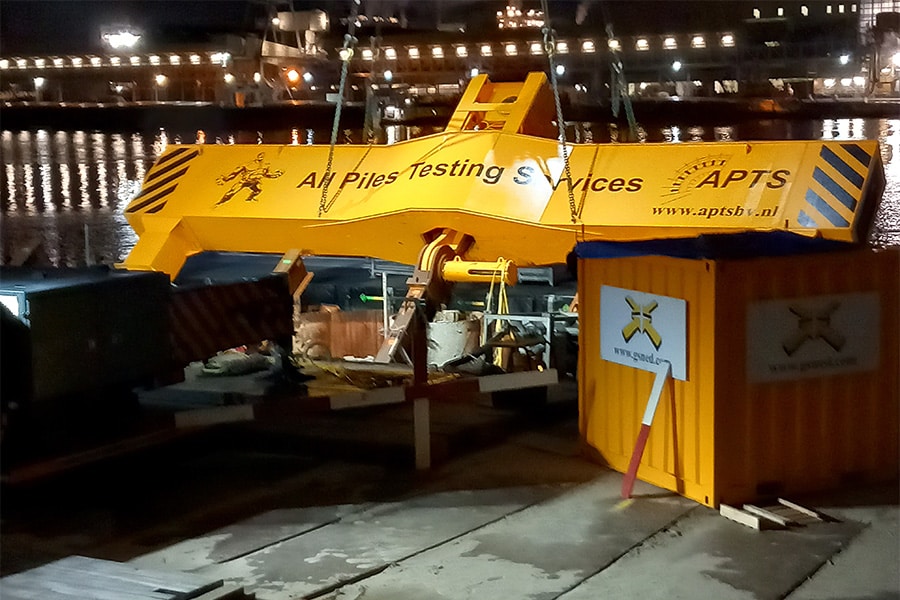
Pole Testing
APTS, part of BMNED, which deals exclusively with high-quality testing of foundation piles, was therefore frequently called in by foundation companies in early 2017. The aim was always to demonstrate with a few tests that the pile tip in question did not need to be downgraded. However, the latter always proved impossible. In all the piles tested by BMNED, the found pile class factor for the point scored significantly worse than the already downgraded factors! A positive aspect of all that testing was that the test results did show a better scoring pile class factor for the shaft. Evidently, then, there is room for improvement in the standard so that bearing capacity is determined in a realistic way. "The biggest problem now is that when a very high point force is calculated and the pile only protrudes half a meter into the dense sand package, there is not enough reserve in the pile," Dylan explains. "Then the structure to be supported may sag excessively. Based on large numbers of high-quality test loads we have performed, we strongly recommend that both pile class factors be correctly incorporated into the standards. In addition, we dare to advocate a different view regarding the now mandatory limiting of the measured cone resistance. Stretching the limitation is an option in this, possibly on the basis of test results the limitation can even be set aside altogether."

Correct factors
A lower performing pile tip and a better performing shaft; so is there cause for concern you might ask yourself? Yes, states Dylan. "Namely, depending on the design of a specific pile foundation, it happens that the necessary net bearing capacity is just not available, sometimes not available at all, and then all hell breaks loose. It is therefore of great importance that our geotechnical engineers can responsibly design based on correct pile class factors."
Dylan acknowledges that the whole issue surrounding pile class factors is a very sensitive one. "Until now, a pile system was always attributed a relatively high point factor. However, as indicated above, in practice this turns out to be unjustified. Often foundation companies see the downgrading of the pile class factor for the point as a commercial threat to their product(s)." According to Dylan, by the way, in most cases this is an unwarranted concern. "After all, by performing a set of high-quality pile tests, the actual net difference can be reduced, sometimes even negated entirely. So piles don't necessarily get thicker and/or longer."
The main benefit of establishing correct pile class factors is primarily that a certified pile system allows not only a better, but also a safer foundation system to be designed. Secondarily, it serves our common mission to at least curb CO2 emissions by not putting more into the ground than is strictly necessary for safe foundation design.



